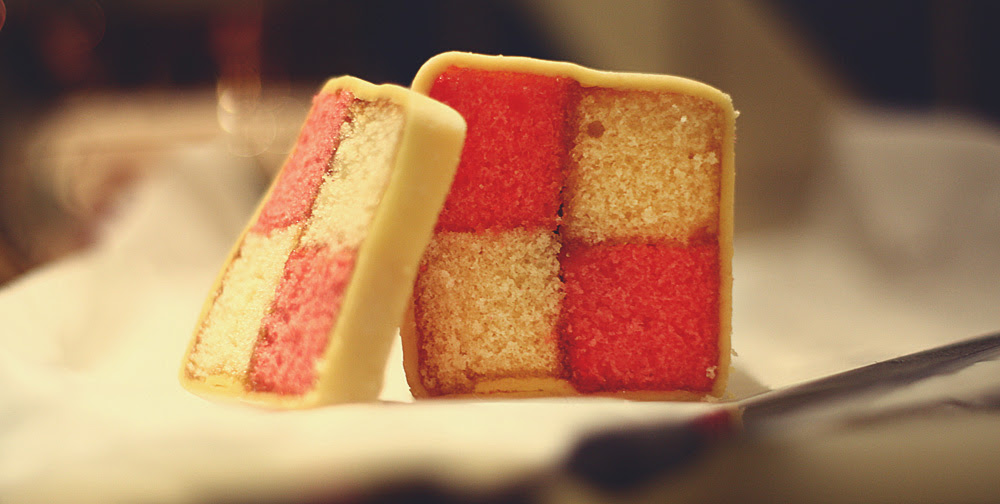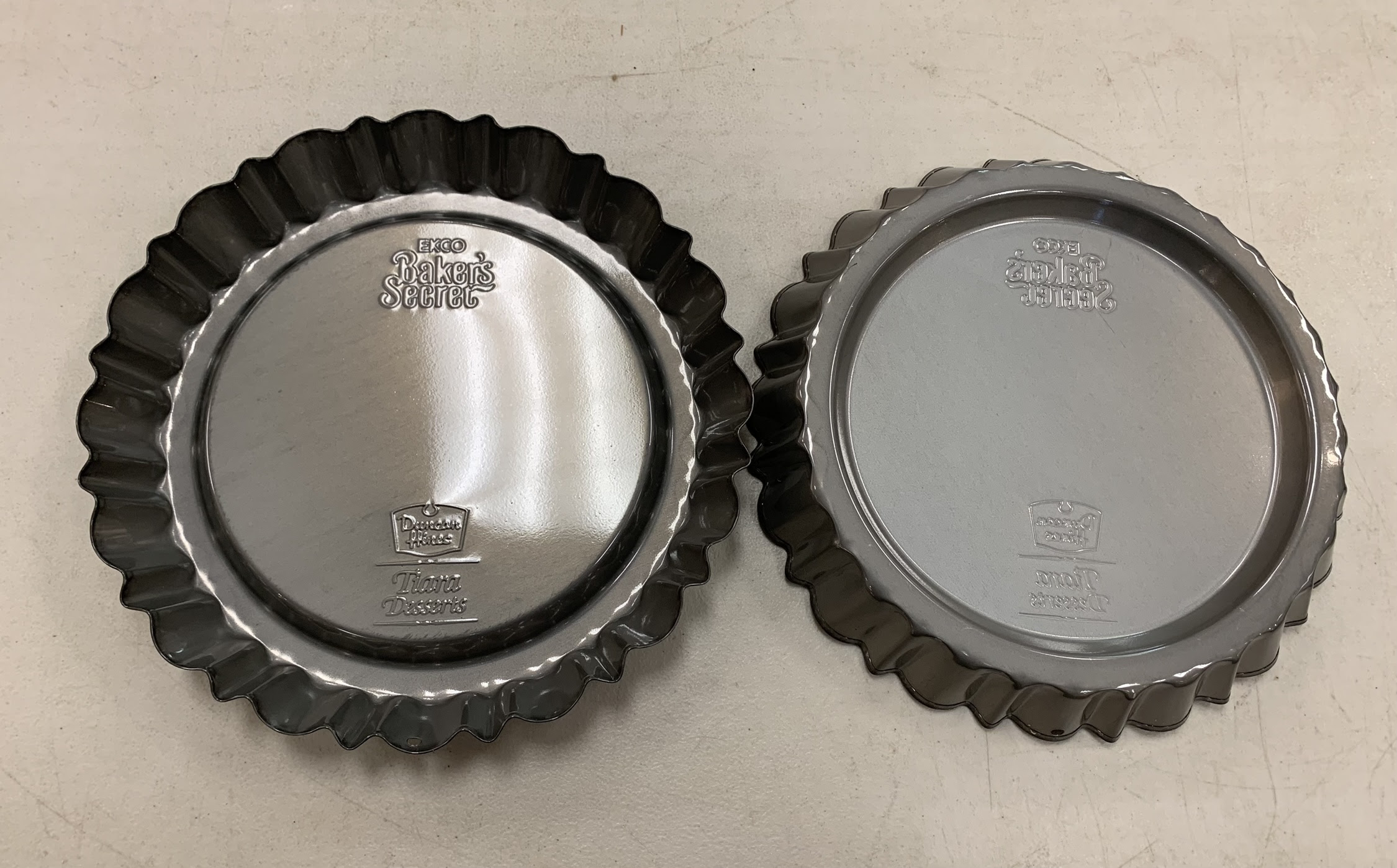Tricksy Cake PansWelcome to the Great Baking Show, Queen B Edition! We regularly offer basic baking gear, but in with the cookie sheets and muffin tins you’ll sometimes find fancier options such as these pans from the 1980s. Made for bakers who want to impress but who haven’t attended fancy cooking schools, the pan itself does much of the heavy lifting. And although they often came with ‘from scratch’ recipes, they were also intended to make boxed cake mixes extra fancy.
First we have this checkerboard cake pan, with secret special divider. Checkerboard cakes have been around a long time, the most famous being the Battenberg (AKA Domino or Church Window Cake) a pink and yellow sponge cake from Great Britain. It was first baked in 1884 when Prince Louis of Battenberg married Queen Victoria’s granddaughter. Early versions had up to 24 squares, but today commercial bakers make simple four-square versions.
With this tricksy 3-layer cake pan, your cake will show 9 checkerboard squares across every slice when cut in the usual wedges. The secret is to pour concentric bullseyes of chocolate and vanilla batter, which is where the divider comes in. The first layer is poured chocolate/vanilla/chocolate, the second is vanilla/chocolate/vanilla, and the last is chocolate/vanilla/chocolate again. Stacked with minimal frosting between layers, the checkerboard is only revealed when the cake is cut – ta DA! There are big round cake cutters that create the same effect starting with single-flavor layers, but this pan set is easier to get everything properly lined up.
Next we have fancy ‘flan’ pans, AKA Mary Ann pans, or in Germany obsttortenform or tortenboden. (These are for cakes, not the Spanish-style egg-custards also called ‘flan’.) |
| Obsttortenform means ‘fruit cake pan’ and tortenboden means ‘cake bottom’; the pan is for making a dish-like cake bottom holding a fruit topping. They come in multiple sizes. The Mary Ann Company was first to produce this style of pan in the U.S. in the 1920s.
In the 1980s, Duncan Hines, maker of boxed cake mixes, promoted their product by co- developing with the Ecko Bakeware Company a version of the Mary Ann pan which they dubbed ‘the Tiara’ after beauty queens’ sparkly crowns. In the initial stage, every box mix in the Tiara line came with a “FREE PAN”. One pan even survived UNUSED all the way to a QBO sale 40 years later, when it finally went home with someone who will bake in it. A ‘Duncan Hines Tiara Desserts’ boxed mix with filling and ‘free’ pan was more expensive than a standard boxed mix (naturally). And once everyone had bought those with the ‘free’ pans, the company then sold the same Tiara cake mixes without the pan at the same higher gourmet price. However, home bakers quickly figured out ANY cake mix and filling would work in the fancy pan so there was no need to spend more on what was essentially regular cake mix and pudding mix but with a snooty price. Consumers – 1, Advertisers – 0!
But as long as you are not being bamboozled into over-spending on boxed mixes, Tiara pans make adorable cakes – top them with pudding and whipped cream, or fresh fruit glazed in shiny jam, or ice cream, syrup and chocolate chips – the sky’s the limit. And because the pan is broader and shallower than a standard layer cake pan, Tiara cakes bake faster, too. A standard recipe for a two-layer 9″ cake will fill 2 Tiara pans, so when you visit QBO, you can maybe even get yourself TWO Tiara pans, since Duncan Hines just about flooded the market with them. |





